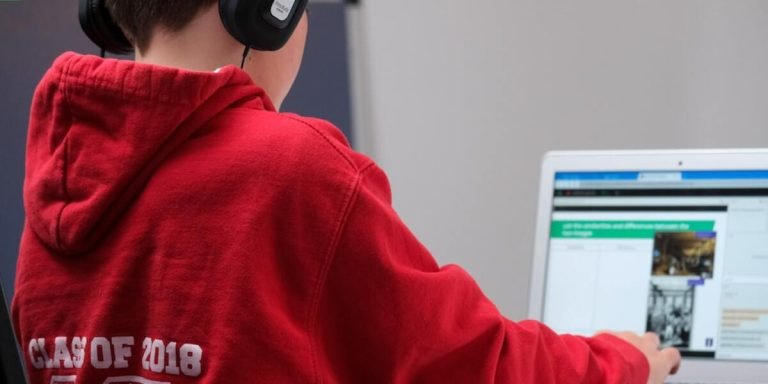IWB Meaning: A Comprehensive Guide for Parents and Educators
Understanding the term “IWB meaning” can unlock a world of educational opportunities for your child. Interactive White Boards (IWBs) are revolutionizing classrooms across the globe, integrating technology into education in an immersive and interactive way. They’re transforming traditional teaching approaches and paving a whole new route to facilitate children’s learning journey.
In this comprehensive guide, we’ll dive deeper into IWBs—their significance, benefits, challenges—and provide you with insights that will help you make informed decisions as parents or educators. Herein lies your window to understanding how this technological innovation has redefined learning spaces globally—essentially providing learners with more engaging experiences than conventional methods ever could have done.
Did you know?
Despite its increasing popularity in modern classrooms, the concept of Interactive Whiteboards (IWBs) was only introduced in 1991 by SMART Technologies – a mere three decades ago!
The Evolution of Interactive Whiteboards (IWB) in Modern Classrooms
The advent of modern technology has had a transformative effect on various sectors, with education being no exception. The integration of advanced educational tools such as Interactive Whiteboards (IWBs) is proving to be instrumental in shaping the teaching-learning dynamics within classrooms. If you’re wondering about IWB meaning, it’s essentially an instructional tool that allows computer images to be displayed onto a board using a digital projector.
Interactive whiteboards have significantly evolved over recent years from merely serving as enhanced blackboards for presentations and lectures to becoming interactive platforms fostering critical thinking and constructive discussions among students. As we advance into 2023, this trend is set for even more dramatic strides taking us far beyond traditional methods.
Indeed, these state-of-the-art devices are redefining contemporary pedagogy by allowing learners’ active participation alongside providing educators innovative means for conveying complex concepts with ease and efficiency. Hence, it can easily be said that smart boards or IWBs hold promising potentials uniquely conducive towards facilitating holistic learning experiences tailor-suited for the digitally savvy generation of today.
Understanding IWB: Definition and Functions
The Interactive Whiteboard, popularly known as IWB, has significantly revolutionized the education sector. To grasp its full potential and impact on learning outcomes – let’s delve into understanding what exactly is meant by IWB.
In a nutshell, when we talk about “IWB meaning”, it refers to an advanced technological tool that transforms traditional teaching methods through digitalization. It’s much more than just a white screen; the interactive touch capability allows teachers and students to write or draw images using their fingers or stylus pens directly onto the board itself.
Now moving towards its core functions which are manyfold:
1. **Real-time Editing**: One of the primary advantages of an IWB revolves around real-time editing features. Teachers can readily modify notes written on these boards during lectures while retaining original copies for future references.
2. **Multimedia Presentations**: Offering vivid visualizations with multimedia presentations like audios/videos/charts makes lessons more engaging and easy to comprehend for students irrespective of their age group.
3. **Internet Connectivity**: Having internet connectivity expands horizons beyond textbooks allowing access to global resources enhancing knowledge transfer capabilities.
4 Restoring Previous Lessons: Unlike conventional chalkboards where information gets erased after every class session, previous lessons can be accurately restored in just one click – saving both time and energy.
Tracing the History of IWB in Educational Settings
The history of Interactive Whiteboards (IWBs) in educational settings dates back to the early 1990s. Back then, their application was limited due to technologic constraints and lack of digital knowledge among teachers. But with time, as technology took giant strides towards advancement, IWBs saw a surge in popularity.
In essence, ‘iwb meaning’ refers to an interactive display board used for teaching or presenting purposes that allow direct interaction through touch or specialized pens. These robust tools quickly became classroom staples globally throughout the late 90s and early 2000’s.
Initially utilized primarily within corporate environments during its inception phases, where they facilitated seamless presentations; it wasn’t long before educators began seeing potential applications within classrooms. The clear advantages such as fostering collaborative learning experiences were evident – promoting robust student engagement while resonating well within tech-savvy young minds eager for modernized approaches to education.
Fast-forwarding into our current decade – we see less reliance on traditional blackboard-teaching methods with more integration of these advanced instructive mechanisms in schools worldwide. Today’s world revels under constantly evolving technological advancements making IWB’s increasingly efficient & user-friendly over the years.
Let us now take you through notable milestones from yesteryears given this backdrop about ‘IWB meaning‘.
1- Richard Wolf conceived Pen Director System (1987): Considered the first communicative product boasting basic functions similar to today’s whiteboards.
Enhancing Teaching Methods with IWB Technology Integration
In the ever-evolving world of 2023, technological advancements have transformed several facets of our lives, not excluding education. IWB or Interactive Whiteboard has emerged as a significant game-changer in this arena. It’s quite intriguing how with IWB integration into classrooms, traditional teaching methods are undergoing an impressive makeover.
IWB is essentially a touch-sensitive screen that works seamlessly like your typical whiteboard but only more interactive and digitally powered. This technology allows educators to present information in unique ways using multimedia resources such as videos, images or sound files which can be integrated into everyday lessons to create engaging learning experiences for students. The beauty lies in manipulating elements onscreen just like you could do physically on paper – erase something here; draw something there – all while interacting directly with the content.
Moreover, through IWBs teachers can save their board notes electronically for later reference- remarkably promoting efficiency during curriculum deliveries while also reducing waste from physical materials usage. They provide dynamic opportunities for collaboration amongst students making classroom instructions more participative and enriching than ever before giving each child space to learn at his/her own pace thus advocating personalization within pedagogical approaches.
Innovative Strategies for Using IWBs to Boost Engagement
Interactive White Boards (IWBs), hold a significant role in the field of education, particularly when it comes to technology integration. With the correct usage and innovative strategies, IWBs – originally designed for business presentations – have managed to boost classroom engagement considerably.
To understand its significance better let’s decode iwb meaning briefly: Interactive whiteboards are large interactive display systems that connect with a computer and projector. The board is touch-sensitive allowing teachers or students to manipulate elements on the screen directly using either their hand or some form of stylus.
One key strategy utilizing IWBs involves integrating multimedia content into lessons. This can involve audio clips, videos, animations and even interactive quizzes which make learning more enjoyable while reinforcing concepts taught.
Another effective approach includes ‘Flipped Classroom’ where pre-existing online material is presented at home before class via school Learning Management Systems(LMS). Then actual face-to-face class time focuses mainly around discussing those topics extensively utilizing functionalities offered by IWBS’s such as brainstorming sessions using mind maps or collaboratively solving problems displayed on-screen encourages every single learner participating.
How IWB Facilitates Diverse Learning Styles and Special Education
Interactive Whiteboard (IWB) technology has revolutionized the way educators approach teaching, providing a multifaceted platform that accommodates diverse learning styles and special education needs. Understanding iwb meaning is essential to leverage this powerful tool effectively.
So, what does IWB mean? Simply put, an Interactive White Board is a large interactive display that connects to a computer and projector. It allows teachers and students to engage with digital content in an immersive fashion – they can write on it using virtual pens or even their finger!
For auditory learners who process information by listening, IWBs offer sound clips along with visual aids revealing comprehensive knowledge at every point of instruction. By integrating real-time audio-visual components into lessons like supportive videos or podcasts creates inclusive classrooms where all learners’ requirements are catered for efficiently.
On the other hand, tactile learner’s benefit from hands-on activities enabled by touch screen interface of IWB technology: Drages-and-drops exercises provide engaging educational games which make complex concepts relatable while building cognitive skills concurrently.
Measuring the Impact of IWB on Student Achievement
The proliferation of technology in education has birthed a variety of tools that promise to revolutionize teaching and learning. One such tool is the Interactive White Board (IWB), an advanced piece of equipment capable of engaging students more actively in their study material. But what exactly does “iwb” mean, and how can we measure its impact on student achievement?
With ‘iwb meaning’ being Interactive Whiteboards, it represents a pushing forward point for classrooms worldwide towards becoming technologically oriented environments. Essentially acting as giant touchscreen computers, IWBs enhance educational experiences by allowing teachers and students to manipulate digital content directly within lessons.
Analyzing Data from Schools That Use Interactive Whiteboards
Interactive Whiteboards (IWBs) are turning heads in the education sector and for good reason. With their ability to engage students visually, these tools have become an integral part of many classrooms globally. However, it’s essential we probe deeper into the capabilities of IWBs by analyzing data from schools that use them.
Keyword: iwb meaning – The term ‘iwb’ stands for Interactive Whiteboard; a presentation device allowing direct interaction between users and its displayed content through touch or special pens.
The effective usage of interactive white boards has been directly linked with enhanced student achievement rates across multiple study sectors. Schools today conduct regular assessment tests enabling them to measure educational growth among learners over time. These valuable datasets give us insights into performance trends when technology like IWB is integrated within teaching methodologies.
Careful observation of such results indicates promising positive outcomes predominantly due to increased student engagement levels brought about by modern learning methods involving visual aids such as interactive whiteboards.
The Role of Teacher Training in Maximizing IWB Effectiveness
Interactive White Board (IWB) technology, despite its potential benefits for student achievement, is not automatically effective. Its efficacy largely depends on how it’s used in the classroom setting – and that’s where teacher training comes into play.
Let’s first understand what IWB means. Essentially, an Interactive White Board is a large interactive display that enables computer images to be displayed onto a board using a digital projector. The instructor can then manipulate the elements on the screen by hand or with stylus directly on the board surface itself.
The role of teacher training becomes crucial when discussing IWB effectiveness and maximization as educators are expected to integrate this progressive tech effectively within their curriculum and pedagogical practices.
A well-versed educator who understands IWB meaning deeply will successfully bridge learning objectives with tailored content for students utilizing all features available: text annotation, recording lessons for later review etc thereby creating engaging sessions enhancing pupils’ ability grasp concepts better resulting improved performance overall!
Conclusion
Unraveling the complex web of IWB meaning has been an enlightening journey, demonstrating its significance in today’s educational arena. As parents and educators, understanding such terms not only enriches our knowledge base but also equips us to better facilitate the learning process for our young learners.
Do remember that this is just one piece of a much larger puzzle named ‘Childhood Education’. By browsing through other resources on our website you can get your hands-on wealth of information about diverse aspects related to educating children. Our site offers invaluable support for parents and educators alike – because when it comes to nurturing curious minds, every bit counts!







